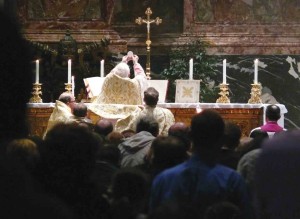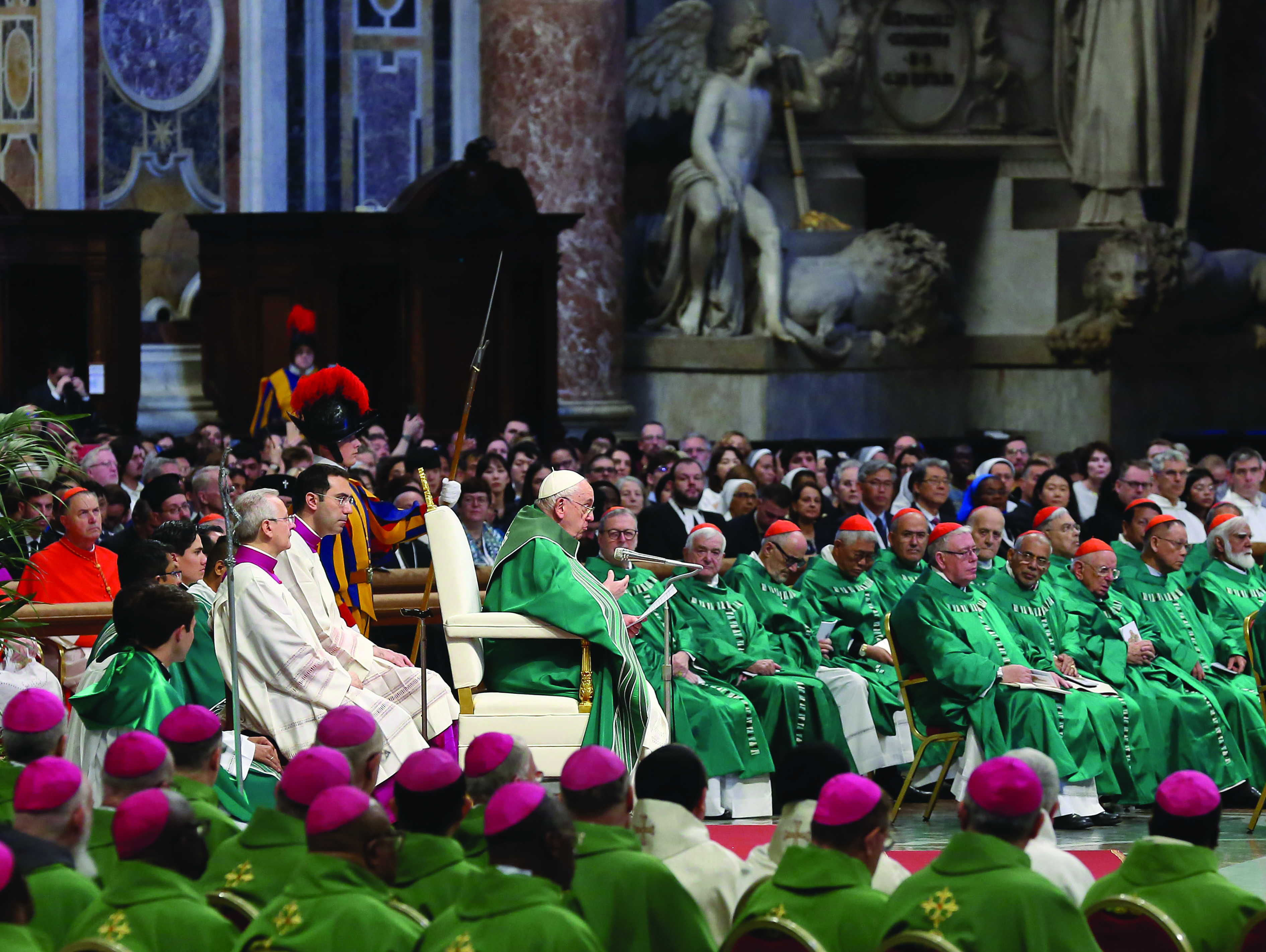
Cardinal Antonio Cañizares, Prefect of the Congregation for Divine Worship and the Discipline of Sacraments.
My proposal to include Cardinal Dario Castrillon Hoyos, Prefect and President Emeritus of the Sacred Congregation for the Clergy and the Ecclesia Dei Commission, respectively, among the “Top Ten People of 2009” was motivated by his exceptional apostolic zeal in serving Benedict XVI’s bid to fully restore the sacred in the Church by maximizing the implementation of the papal motu proprio Summorum Pontificum. In loyally carrying out the will of the Holy Father, he went well beyond his mandate, not limiting himself to preaching only, but also practicing what he was preaching. And what better way to preach than by example?
Cardinal Antonio Cañizares Llovera, Prefect of the Congregation for Divine Worship and the Discipline of the Sacraments, on November 3, 2012, seemed to “take the baton” from Cardinal Castrillon Hoyos, becoming the leading Vatican personality in office who is giving all his support to the application of Summorum Pontificum according to the will of the Holy Father.
On November 3, Cañizares celebrated a solemn pontifical Mass in the extraordinary rite at the Altar of the Chair in St. Peter’s Basilica to close the November 1-3 international pilgrimage “Una Cum Papa Nostro” (“Together with Our Pope”), organized by the Coetus Internationalis pro Summorum Pontificum (a group of traditionalist Catholic organizations from many countries whose aim was to bring together all those who support Summorum Pontificum in a public gesture of support for Pope Benedict XVI during the Holy Year of Faith and for the fifth anniversary of the 2007 motu proprio).
It was the fourth pontifical Mass in the past three years to be celebrated in the extraordinary rite in St. Peter’s.
Cañizares’ decision appears all the more significant and courageous against the background of the uncertainty about who the celebrant would be even days before the event, and the rumor that a number of senior prelates had kindly turned down the request. But the decision of Cañizares could not have been a more welcome breakthrough because of the profound symbolism attached to it.

Cardinal Cañizares celebrates a Tridentine Solemn Pontifical Mass in St. Peter’s Basilica at the end of the international pilgrimage Una Cum Papa Nostro (together with our Pope) on November 3, 2012.
As the entrance of the traditional faithful into St. Peter’s, in an imposing procession amid traditional prayers and hymns through the basilica’s main portal (opened especially for them) is seen as their definitive and full acceptance within the Church, the decision of the guardian of liturgical orthodoxy to be the celebrant meant the definitive, full acceptance of the old, extraordinary rite. It meant that traditional Catholics are no longer merely tolerated by Rome. They have now been recognized and welcomed as full-fledged sons of Mother Church and an integral part of the Catholic mainstream in full communion with the Roman Pontiff.
The Mass was preceded by a message in French and Italian sent by the Pope through his secretary of state, Cardinal Tarcisio Bertone. “On the occasion of the international pilgrimage to Rome for the fifth anniversary of the motu proprio Summorum Pontificum, His Holiness Pope Benedict XVI conveys his cordial greetings to all the participants assuring them of his fervent prayer,” the message said. “Through this motu proprio, the Holy Father wanted to respond to the expectations of the faithful who are attached to the previous liturgical forms. In fact, as he wrote in his letter to present the motu proprio, it is good to preserve the riches which have developed in the Church’s faith and prayer, and to give them their rightful place, while fully recognizing the value and sanctity of the ordinary form of the Roman rite. In this year of faith promulgated at a time when the Church celebrates the 50th anniversary of the opening of the Second Vatican Council, the Holy Father invites all the faithful to manifest in a special way their unity in faith. Thus they will be effective creators of the new evangelization. Entrusting all participants of the pilgrimage to Rome to the maternal intercession of the Virgin Mary, the Holy Father wholeheartedly imparts to them the Apostolic Blessing.”
Cardinal Cañizares in his homily reflected on the devotion to the Pope of the pilgrims gathered in the Basilica.
“We desire with all the participants in this Holy Mass, in this sacrifice of praise and communion of the whole Church, for it to truly be a thanksgiving to God for all the work that the Holy Father Benedict XVI is accomplishing, in particular for his motu proprio Summorum Pontificum, which is a gift for the whole Church,” he said. “We also want it to be a sign of and witness to a filial and affectionate backing and support to the Holy Father, under today’s difficult circumstances, on the part of the pilgrims gathered here, as well as a desire to participate in the movement and evangelizing impulse that the Pope, supreme pastor of the Church, wants to give to the whole Church, offering Her again the youth of the traditional liturgy.”
Asked why he agreed to celebrate the Mass, Cañizares said: “I agreed because it is a way to show people it is normal to use the 1962 missal: there are two forms of the same Rite but only one Rite, so it is normal to use it during Mass celebrations. I have already celebrated a number of Masses according to the missal introduced by the Blessed John XXIII, and I will gladly do so again.”






Facebook Comments